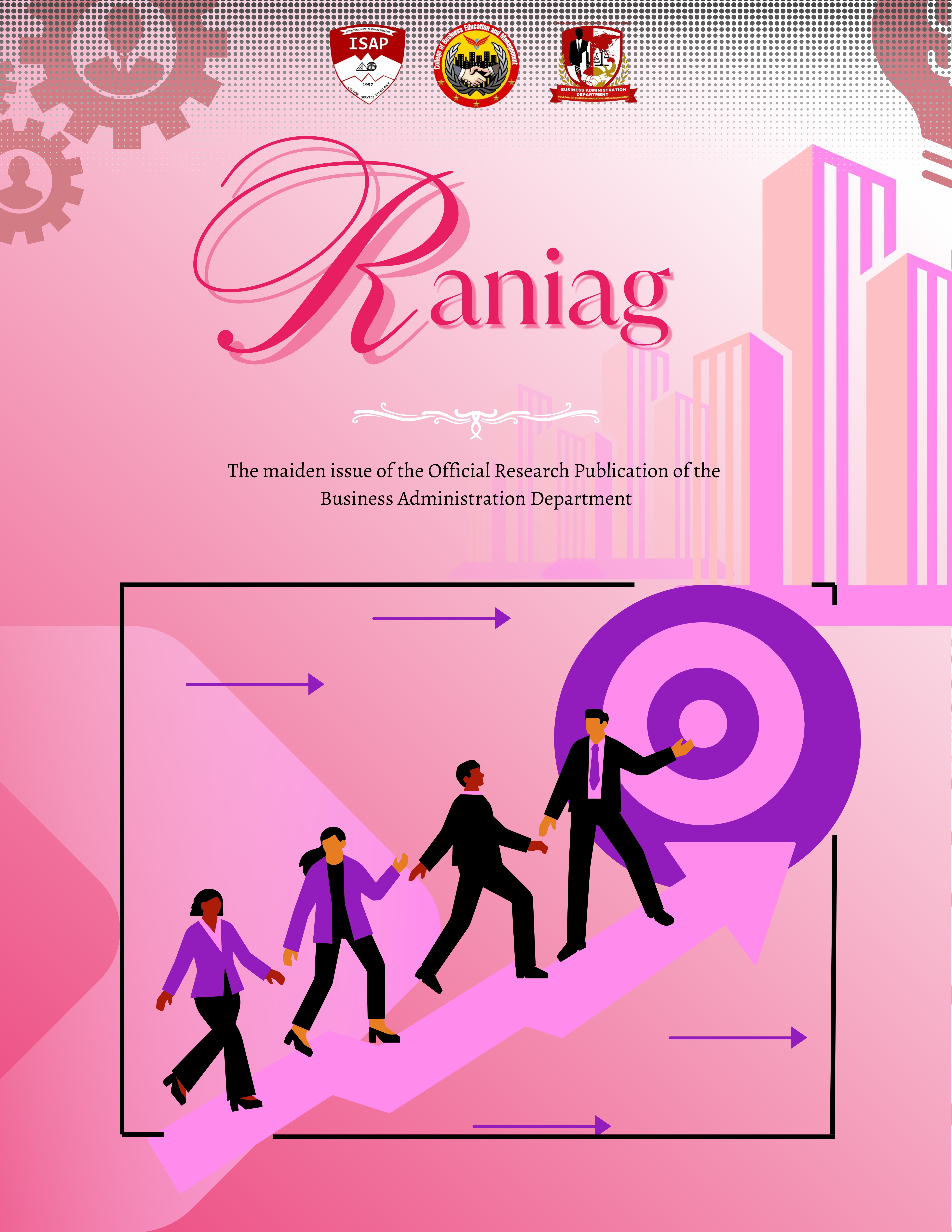THE CONTRIBUTORY FACTORS OF ISAP STUDENTS IN SELECTING SAVING AND INVESTMENT INSTITUTION
Keywords:
Contributory factors, Selection, Savings, Investment, Financial InstitutionsAbstract
This study explores the contributory factors influencing the selection of savings and investment institutions among students with accounts. Employing a mixed-methods approach, the research delved into convenience, services offered, reputation, financial benefits, and promotional strategies as key determinants of decision-making. Through simple random sampling, respondents are drawn from individuals possessing both savings and investment accounts. The data gathered were analyzed with the use of frequency count and percentage distribution, weighted mean, One-way ANOVA, Independent sample t-test, Pearsons- R, and Regression analysis. The findings of the study revealed that the banking and non- banking preference of the respondents in terms of saving, was BDO, on the other hand, they prefer SunLife as their investment option. Among the factors, the respondents strongly agreed that convenience, services offered, reputation, financial benefits, and financial promotional strategies influenced their banking selection. In the assessment of the factors influencing the banking selection decision based on their profile variables, financial benefits among students of different year levels, specifically fourth year level showed a significant difference as to the p-value were less than the chosen significant level. Furthermore, in the assessment on the factors and investment, convenience and reputation revealed a statistically significant difference thus, null hypothesis were rejected. Also, in the analysis of the banking and non- banking preference in terms of investment and factors, the result showed that the factors significantly affect the investment preference of the respondents, therefore, the null hypothesis were rejected. Overall, this study affirms that the role of the different contributory factors was essential in shaping students' preferences for banking institutions. These factors collectively drive the respondents’ decisions, highlighting their desire for accessible services, efficient customer support, trustworthy reputation, financial advantages, and word-of-mouth influence.


